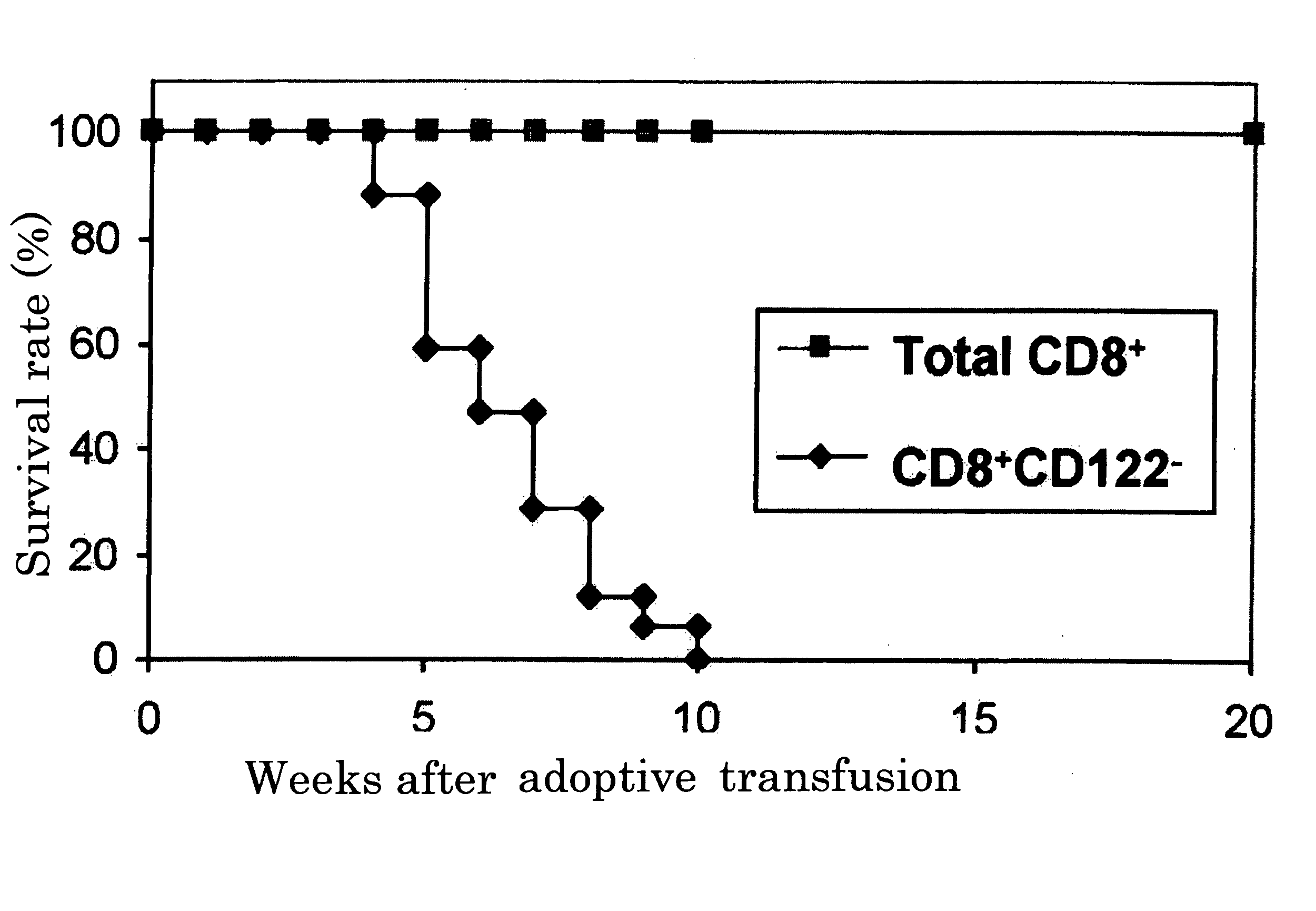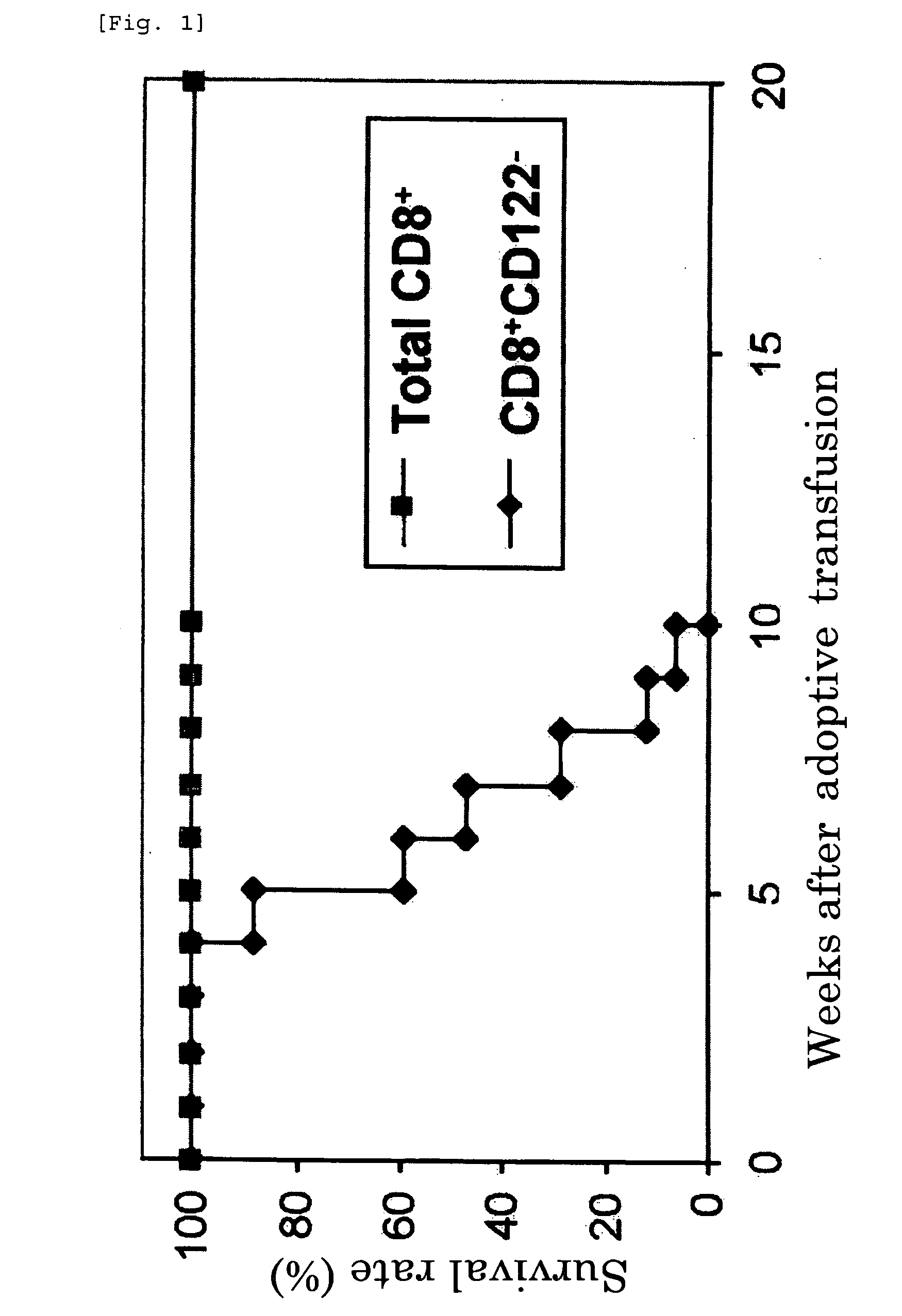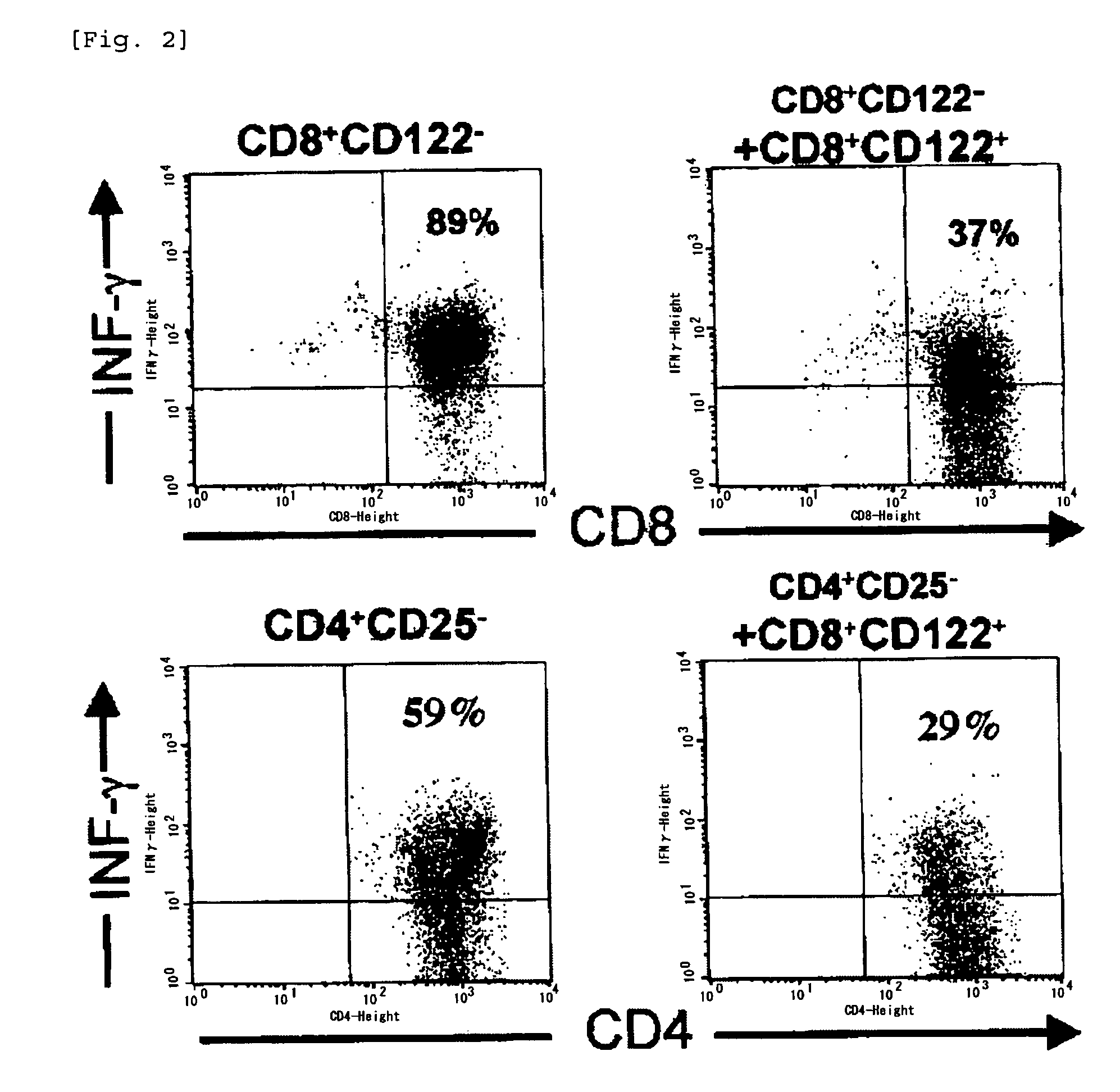Regulatory cells that control T cell immunoreactivity
a technology of immunoreactivity and regulatory cells, applied in the field of t cell subsets, can solve the problems of not being isolated and specifically identified, unable to suppress activated cd8, and unable to suppress killer t cells, etc., and achieve the effect of improving these abnormalities
- Summary
- Abstract
- Description
- Claims
- Application Information
AI Technical Summary
Benefits of technology
Problems solved by technology
Method used
Image
Examples
example 1
[0039] Half a million CD8+CD122− T cells or total CD8+ T cells isolated from normal mice by using a cell sorter were intravenously transfused into lymphocyte-lacking RAG-2 knockout mice, and survival rates of the mice were followed for 20 weeks after transfusion. As shown in the results of FIG. 1, all the mice transfused with CD8+CD122− T cells (17 mice) died within 10 weeks after transfusion, while all the mice transfused with total CD8+ T cells (20 mice) were healthy until 20 weeks after transfusion.
example 2
[0040] 50,000 CD8+CD122− T cells isolated from normal mice by using a cell sorter were stimulated by anti-mouse CD3 antibodies immobilized onto a culture plate, and cultured in the presence of interleukin-2 (25 U / mL) for 3 days. Cells were collected after the culture, and fixed after staining the cell surface with anti-CD8 antibodies, and flow cytometric analysis was performed on cells that were stained for intracellular interferon-γ with anti-interferon-γ antibodies. The same experiment was performed by adding 10,000 CD8+CD122+ T cells, and interferon-γ (IFN-γ) production from CD8+CD122− T cells was examined.
[0041] The results are shown in FIG. 2 (The values in the panel of the figure show the percentages of interferon-γ-producing cells). Comparison of the results after both cultures showed a lower percentage of interferon-γ-producing cells by the effects of added CD8+CD122+ T cells. In addition, when the effects of CD8+CD122+ T cells were similarly investigated by using CD4+CD25−...
example 3
[0042] 50,000 cells isolated from normal mice by using a cell sorter (CD8+CD122+, CD8+CD122−, and CD4+CD25+ cells) were subcutaneously injected into neonatal CD122 knockout mice. After 7 weeks, CD4+ T cells of the knockout mice spleen were stained with anti-CD69 antibody, and flow cytometric analysis was performed to examine the activated state of the T cells. At the same time, peripheral blood granulocyte count and hematocrit were measured.
[0043] The results are shown in FIGS. 3-5. Here, the values in the panel of FIG. 3 present the percentages of activated CD69+ T cells. The upper two panels present cases of untreated normal mice (WT) and CD122 knockout mice (KO). The lower panel presents conditions of knockout mice to which each cell was transfused in the neonatal period. FIG. 4 presents mean values of peripheral blood granulocyte counts in 5 cases of untreated normal mice (WT), CD122 knockout mice, and knockout mice transfused with each T cell subset. In addition, FIG. 5 presen...
PUM
| Property | Measurement | Unit |
|---|---|---|
| concentration | aaaaa | aaaaa |
| specific gravity | aaaaa | aaaaa |
| CFSE fluorescence | aaaaa | aaaaa |
Abstract
Description
Claims
Application Information
 Login to View More
Login to View More - R&D
- Intellectual Property
- Life Sciences
- Materials
- Tech Scout
- Unparalleled Data Quality
- Higher Quality Content
- 60% Fewer Hallucinations
Browse by: Latest US Patents, China's latest patents, Technical Efficacy Thesaurus, Application Domain, Technology Topic, Popular Technical Reports.
© 2025 PatSnap. All rights reserved.Legal|Privacy policy|Modern Slavery Act Transparency Statement|Sitemap|About US| Contact US: help@patsnap.com



